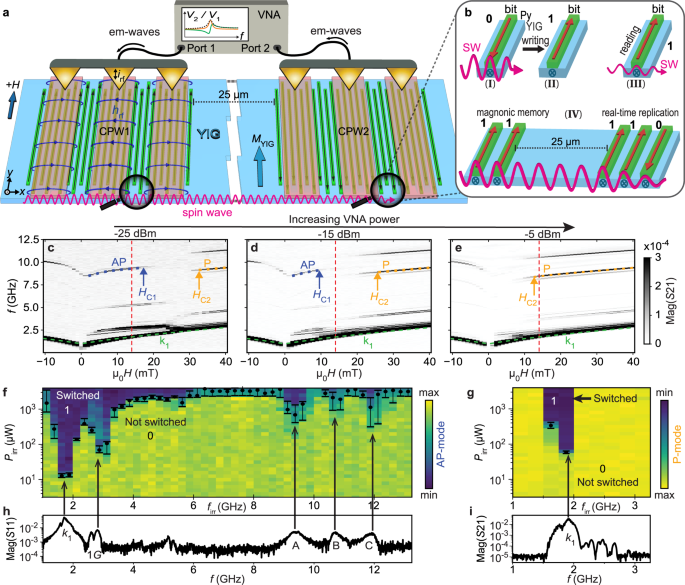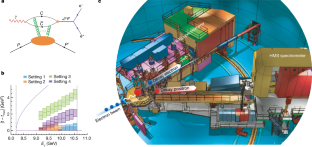2023-03-29 スイス連邦工科大学ローザンヌ校(EPFL)
このマグノニクスアプローチは、プロセッサとメモリを分離する従来のコンピューティングアーキテクチャの不十分なエネルギー効率を解決し、インメモリ計算を実現する可能性があります。
スイスのローザンヌ工科大学のNanoscale Magnetic Materials and Magnonics Labは、電磁スペクトルのテラヘルツ帯でデータ処理できると考えています。
<関連情報>
- https://actu.epfl.ch/news/magnon-based-computation-could-signal-computing-pa/
- https://www.nature.com/articles/s41467-023-37078-8
フェリ磁性イットリウム鉄ガーネットのマグノン伝搬によるナノ磁性体の反転が不揮発性マグノンメモリを可能にする Reversal of nanomagnets by propagating magnons in ferrimagnetic yttrium iron garnet enabling nonvolatile magnon memory
Korbinian Baumgaertl & Dirk Grundler
Nature Communications Published:29 March 2023
DOI:https://doi.org/10.1038/s41467-023-37078-8

Abstract
Despite the unprecedented downscaling of CMOS integrated circuits, memory-intensive machine learning and artificial intelligence applications are limited by data conversion between memory and processor. There is a challenging quest for novel approaches to overcome this so-called von Neumann bottleneck. Magnons are the quanta of spin waves. Their angular momentum enables power-efficient computation without charge flow. The conversion problem would be solved if spin wave amplitudes could be stored directly in a magnetic memory. Here, we report the reversal of ferromagnetic nanostripes by spin waves which propagate in an underlying spin-wave bus. Thereby, the charge-free angular momentum flow is stored after transmission over a macroscopic distance. We show that the spin waves can reverse large arrays of ferromagnetic stripes at a strikingly small power level. Combined with the already existing wave logic, our discovery is path-breaking for the new era of magnonics-based in-memory computation and beyond von Neumann computer architectures.



